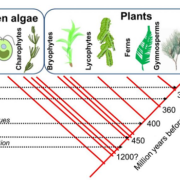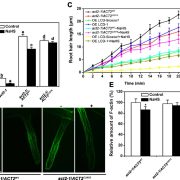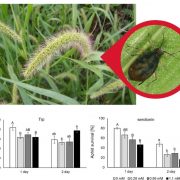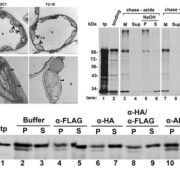Review. Rise of a cereal killer: The biology of Magnaporthe oryzae biotrophic growth
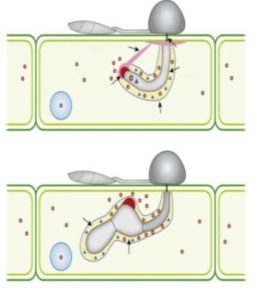 The fungal pathogen Magnaporthe oryzae causes one of the most destructive diseases of rice, destroying around 10-30% of rice production world-wide. The pathogen undergoes different developmental changes and produce specialized infectious structures in order to rapidly proliferate within the host cells. The detailed molecular processes of how the fungus co-ordinates this complex infection pattern is still not well understood. Fernandez and Orth in this recent review, have reflected on the recent advances and understanding of the cell biology and molecular factors that lead to this disease establishment. The authors highlight host sensing and appressorium formation which is coupled with environmental sensing by modulation of the MAP kinase signalling pathways. The conidia undergo cell cycle progression and autophagic cell death to form appressorium, that subsequently builds a massive turgor pressure translated into physical force to enter the host. Once inside, there is developmental re-programming to form filamentous infectious hyphae that promote the cell to cell pathogen spread. Several effector proteins help in shaping the interaction with distinct localisation pattern between cytoplasmic and apoplastic effectors. Additionally hormonal homeostasis is disrupted in order to facilitate nutrient uptake. Further research on composition of apoplastic matrix and mechanism underlying the processes targeted by effectors would help to understand M. oryzea biology in much detail. (Summary by Amey Redkar) Trends Microbiol. 10.1016/j.tim.2017.12.007
The fungal pathogen Magnaporthe oryzae causes one of the most destructive diseases of rice, destroying around 10-30% of rice production world-wide. The pathogen undergoes different developmental changes and produce specialized infectious structures in order to rapidly proliferate within the host cells. The detailed molecular processes of how the fungus co-ordinates this complex infection pattern is still not well understood. Fernandez and Orth in this recent review, have reflected on the recent advances and understanding of the cell biology and molecular factors that lead to this disease establishment. The authors highlight host sensing and appressorium formation which is coupled with environmental sensing by modulation of the MAP kinase signalling pathways. The conidia undergo cell cycle progression and autophagic cell death to form appressorium, that subsequently builds a massive turgor pressure translated into physical force to enter the host. Once inside, there is developmental re-programming to form filamentous infectious hyphae that promote the cell to cell pathogen spread. Several effector proteins help in shaping the interaction with distinct localisation pattern between cytoplasmic and apoplastic effectors. Additionally hormonal homeostasis is disrupted in order to facilitate nutrient uptake. Further research on composition of apoplastic matrix and mechanism underlying the processes targeted by effectors would help to understand M. oryzea biology in much detail. (Summary by Amey Redkar) Trends Microbiol. 10.1016/j.tim.2017.12.007


